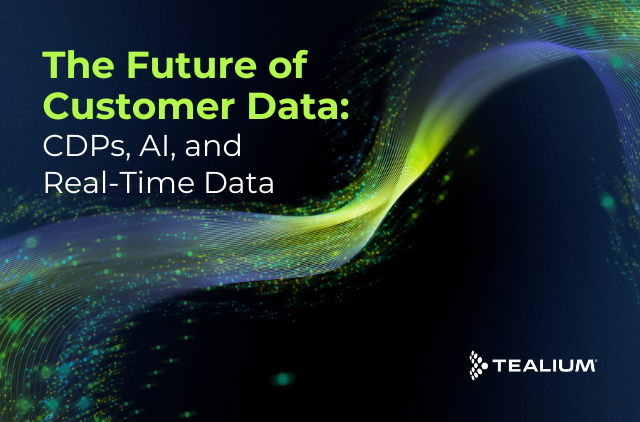You may have heard a thing or two about the death of third party cookies. Long story short, third party cookies are (soon to be ‘were’) one of the worst offenders of non-consented data collection (and thus personal data privacy) out there, so they’re finally being put out to pasture. But many people are confusing third party cookies with third party data as a whole.
The thing is…an entire industry for online advertising was built on top of third-party cookies for over a decade. Everyone cites Amazon as the ‘business school’ example of how consumers prefer convenience above all else, but third party cookies are just as good of an example in the B2B realm. Until now, it was way more convenient to basically outsource data management to adtech (like DMPs) than do it yourself. Countless millions of dollars, probably billions, were invested to make this system work, not due to effectiveness, but rather because they were easy (you didn’t even need to know you were using them!)….and the industry got used to it. Org structures and individual jobs were built to match. It’s a situation where you (or your company) could very well be reaping the benefit of third party cookies without even realizing specifically how, to what extent, and/or even considering what your options might be.
What Are Third Party Cookies?
First off, what’s a cookie? A cookie is a file that stores data on your computer. It stores things like whether you’re logged in, what pages you may have visited, your preferences, etc. Then, this cookie can be read to understand the data that is saved in there and to use that data to provide an experience in the context of it. The “first” or “third party” notation in relation to cookies refers to who created the cookie, or in other words who saved that data. And not all cookies are going away…only the third party cookies are.
For example, when the cookie is set by the company you’re visiting or interacting with, it’s first party. When it’s set by a different company, it’s third party. For example, if you’re browsing Ford’s website and Ford saves your data in a cookie, that’s a first party cookie. When it’s saved by Google, that’s a third party cookie. Advertising venues (often the “third party” collecting data in third party cookies), would then use this data to target advertising, and selling this targeting to advertisers.
So a cookie is used to save and transfer data. First party cookies have limitations, but are still useful. Third party cookies are rapidly deteriorating and already can’t be used for a huge chunk of internet traffic (hard to quantify precisely, but on the order of 30 – 50%) because Apple Safari and Mozilla Firefox forbid it, with Google Chrome doing the same come 2024.
The cookie itself is here to stay, as a critical element of data collection. Just third party cookies are being deprecated.
Who Cares About Third Party Cookies?
The reason why this is a big deal is because while you might not be responsible for understanding all the inner workings of the advertising ecosystem, you may be responsible for the performance of your programs and the strategy behind how you reach that performance. And while third party cookies have been the exoskeleton of personalized digital advertising, privacy demands are forcing the shedding of the third party cookie system. Safari and Firefox have already sunset the cookie, and Google is gearing up for the same. Program performance (and the ability to measure it) is at stake.
Knowing when to tap third party data moving forward, and when to kill (or how to replace) third-party cookie-based tech, is a critical consideration for every business now. We are at a juncture in the market where the inner workings of technology make very real differences to your strategy and the performance you’re able to deliver.
Which brings us to the specific difference between third party cookies and third party data. With all the news around the death of third party cookies, it would be easy to assume anything “third party” is bad. But it’s an important distinction to make because while one is going the way of the Dodo bird (third party cookies), the other (third party data) remains a critical tool for delivering the best possible customer experience (and ironically, for filling the hole left by third party cookies).
What is Third Party Data?
Similar to cookies, there is first and third party data. However, in this case ‘third’ or ‘first party’ doesn’t refer to the method for storing and transferring data, it notates who collected the data (with no restrictions on how). Third party data could be saved in a first party cookie because the cookie is just the method. In the context of the example above, any data that Ford collects about my relationship with them is first party. Any data that Google collects that Ford may be interested in is third party. Google very well could know a lot of interesting things about me that Ford would find valuable, like my search behavior or what websites I like to visit.
Google would need my consent to share that third party data.
Why is the Difference Important?
Data, and the cookies that help transmit it, is critically important to delivering an optimal customer experience. Without understanding what data you can use for customer experience, and the ways in which that data can flow to power it, it’s impossible to cater to customer needs in the moment when those needs occur or can be serviced. Where third party cookies (and more importantly, the technologies that depend on them) are being eliminated, third party data remains a viable and necessary source of customer insights that could make the difference between a delightful or a ‘meh’ customer experience.
So How Does a Company Continue to Use Third Party Data?
There are many perfectly privacy-safe third party data sources that aren’t going away that give insights into things like the weather, life stage, likes and dislikes, and more. Tealium partners with many of these solutions through integrations like those found in our Identity Partner Ecosystem. These can be extremely useful insights for delivering customer experience. We believe that these insights should supplement a first party-centric data strategy.
There are equally as many technologies that were built on top of third party cookies that have now been mortally wounded though. Not understanding which technologies these are, and what your options are to replace them, could mortally wound your customer strategy, as well.
Summary
Third party data and third party cookies are not the same thing. Where third party cookies’ days are numbered with their upcoming deprecation by Google Chrome in 2024, third party data will be around for the foreseeable future. Writing off third party data because of third party cookie deprecation would be a mistake. Similarly, writing off first party cookies because of third party cookie deprecation would be a mistake.
Not all cookies are bad cookies.
Moving forward, here are some good tips to make sure you’re planning effectively:
- Be sure to evaluate what technologies in your stack may operate with third party cookies. These technologies may become less effective or have new requirements. Make sure you plan accordingly.
- Evaluate how your use of first party data may have to evolve. It’s likely that your first party data strategy will grow and you’ll want to make sure to plan your technology and team skillsets accordingly.
- Identify where you are using third party data and where it might be able to fill a gap opening due to third party cookie deprecation.
- Understand the sources of the data you’re using for customer experience, and ensure you have visibility and the control to optimize it.
For more information on the different types of customer data, check out our eBook, “Customer Data Integration 101: How to Integrate Data from Different Sources Into Your CDP.”







